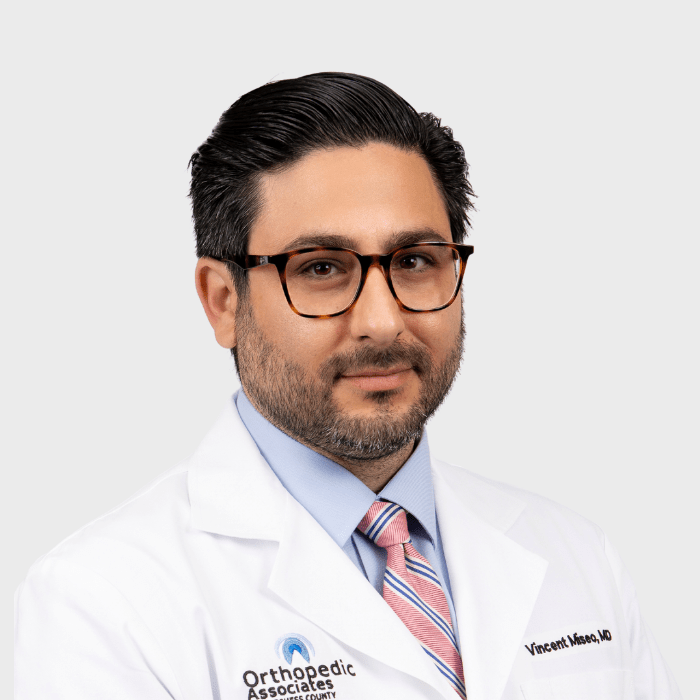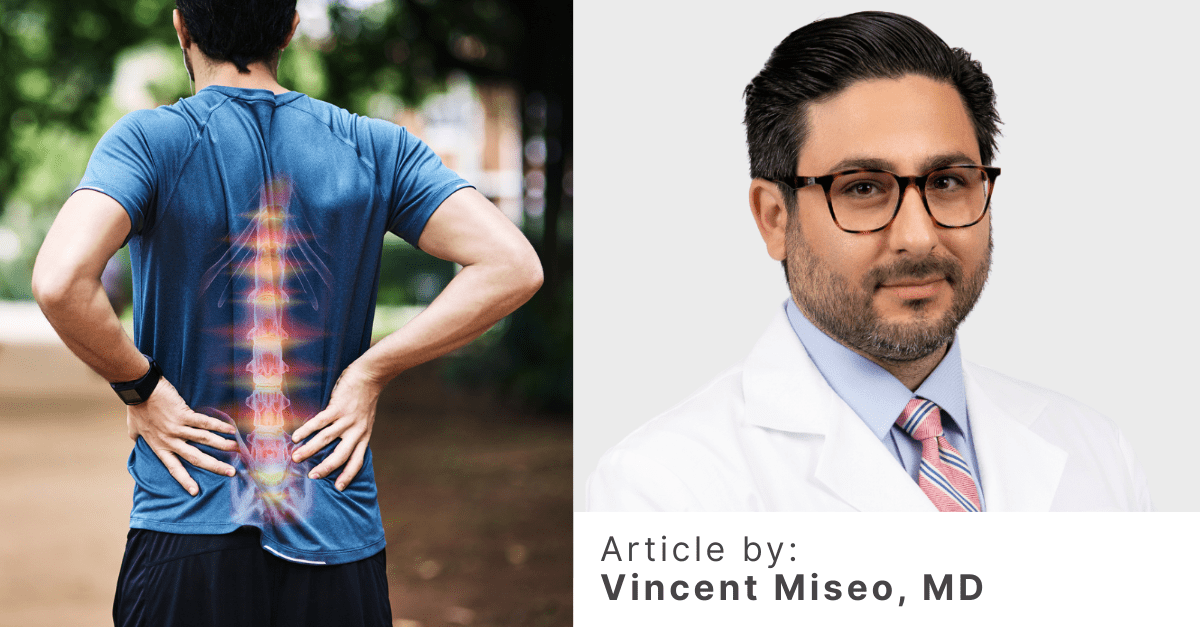
Featured Doctor
Vincent Miseo, MD
Dr. Vincent Miseo is a fellowship-trained orthopedic spine surgeon at Orthopedic Associates of Dutchess County.
View Profile

Spondylolisthesis
What is spondylolisthesis?
This occurs when one vertebra slips forward over the one below it, usually in the lumbar spine.
What are the symptoms?
People typically experience lower back pain, leg pain or sciatica, and potentially numbness or weakness with walking.
How is it treated?
Non-surgical options include physical therapy, core strengthening, bracing, and pain management. Surgery may involve spinal fusion, or decompression in select low-grade cases without instability.
Sciatica
What is sciatica?
Sciatica is nerve pain that radiates along the sciatic nerve, typically caused by compression of the L4 to S1 nerve roots in the spine.
What are the symptoms?
Sharp or burning leg pain, numbness, tingling, or weakness that worsens with sitting, coughing, or prolonged standing.
How is it treated?
Non-surgical options include medications, physical therapy, and epidural steroid injections. A minimally invasive lumbar discectomy may be used to relieve pressure from a disc fragment on the nerve.
Degenerative Disc Disease (DDD)
What is degenerative disc disease (DDD)?
DDD is the natural wear-and-tear of spinal discs that leads to pain, inflammation, and stiffness in the spine.
What are the symptoms?
Chronic neck or back pain that worsens with sitting, bending, or lifting.
How is it treated?
Treatment may include physical therapy, medications, injections, and activity modification. In the cervical spine, disc replacement or ACDF may be performed. In severe lumbar cases, spinal fusion may be considered.
Pinched Nerve (Radiculopathy)
What is a pinched nerve (radiculopathy)?
A pinched nerve occurs when a nerve root is compressed or irritated, often due to herniated discs, bone spurs, or spinal stenosis.
What are the symptoms?
Radiating pain in the arms or legs, numbness, tingling, and/or muscle weakness.
How is it treated?
Treatment may include anti-inflammatories, physical therapy, and injections. Surgical options include ACDF or disc replacement for cervical radiculopathy and minimally invasive discectomy for lumbar radiculopathy.
Herniated Disc
What is a herniated disc?
A herniated disc occurs when the inner gel of a spinal disc leaks out and compresses a nearby nerve.
What are the symptoms?
Sudden back or neck pain, radiated nerve pain (such as sciatica or arm pain), numbness, or weakness.
How is it treated?
Non-surgical treatments include rest, medications, injections, and physical therapy. Surgical options include lumbar/cervical discectomy, ACDF, or disc replacement.
Bulging Disc
What is a bulging disc?
A bulging disc is when the outer layer of the disc protrudes outward but hasn’t ruptured. It may or may not compress a nearby nerve.
What are the symptoms?
Back or neck pain, sometimes with mild radiated nerve symptoms. Usually less severe than a herniated disc.
How is it treated?
Conservative care includes physical therapy, posture correction, and medications. If nerve compression is present, a minimally invasive discectomy may be necessary.

